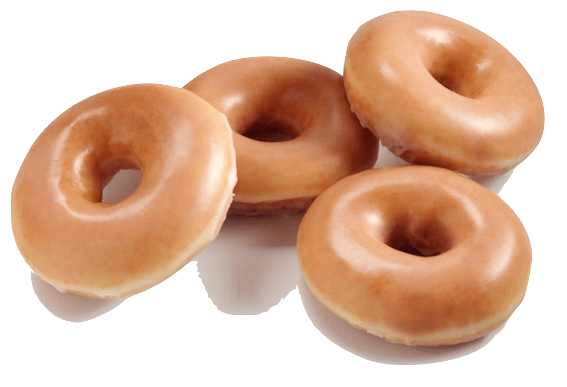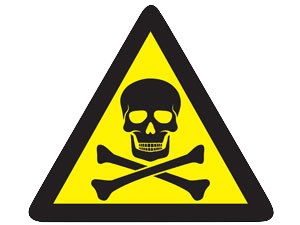 There are certain foods which are considered absolute treats. Over the years we have seen how foods that contribute to poor health are made to be so special. A perfect example are the golden arch fast food outlets that we know around the world as McDonalds. When the restaurants first opened it was considered as a treat to go and have your meal at McDonalds. It was new and it was a novelty. As time progressed the company figured that the novelty for adults was wearing off so they decided to angle their marketing at the children, and which parent has not experienced their children asking to pull into a maccas for a special treat. They even get a playground. This is a tactic which can be considered as a hit below the belt. Sell the worst food to the youngest in our community and do it in a way where the parents oblige just to keep their precious children happy.
There are certain foods which are considered absolute treats. Over the years we have seen how foods that contribute to poor health are made to be so special. A perfect example are the golden arch fast food outlets that we know around the world as McDonalds. When the restaurants first opened it was considered as a treat to go and have your meal at McDonalds. It was new and it was a novelty. As time progressed the company figured that the novelty for adults was wearing off so they decided to angle their marketing at the children, and which parent has not experienced their children asking to pull into a maccas for a special treat. They even get a playground. This is a tactic which can be considered as a hit below the belt. Sell the worst food to the youngest in our community and do it in a way where the parents oblige just to keep their precious children happy.
There are many other companies which use similar marketing tactics to sell their food and Krispy Kreme Doughnuts is without a doubt one of these companies. Their delicacies are a special treat for many people. When they started to open their outlets in Australia they managed to drum up so much interest that there were line ups just to buy their products. Today they have a cult like following.
It is important to understand what actually goes into these products. People love them and they can’t wait to get their hands on them. The question is why are they so tasty? Could they be engineered that way? What is in them anyway? These are all crucial questions as what we put into our mouth ultimately has a huge bearing on our health.
Ask yourself the question, would I put raw chemicals into my mouth knowing full well that they are causing me damage? This of course can happen as it does with tobacco. Tobacco is addictive but putting a situation where someone is addicted to substance and can’t help themselves aside, most people would say that they would not be consuming chemicals that are dangerous. There is another equation here and that is can these Krispy Kreme delicacies be addictive? We do know that with all the refined carbohydrates that they contain they very well may be an element of addiction for many people and that is not to mention the array of chemical additives found in these little irresistible treats.
When it comes to chemical additives these are regulated very carefully by government bodies. The level of any one chemical added to a food cannot exceed the daily allowable safe limit. The point is, what happens if you end up eating more than a daily serve of these doughnuts? What if you do this day in day out? What if you eat other foods that contain these chemicals and the levels of these chemicals ? How on earth do you know when you have exceeded your daily limit?
Whether you stay within the daily serve guidelines or not it is important to understand exactly what you are eating. Have a look at what is in these beauties and then think about how they have been presented to you. You will probably feel that Krispy Kreme has hit has been below the belt. Why not just say no and go for something beneficial to your health.
The important question here is do you really know what you are eating? If not shouldn’t you be finding out?
Below is a list of ingredients used in the healthiest of the range, a standard original glazed doughnut. From this choice it just goes downhill.
Serving size 1 doughnut (52 grams)
Ingredients:
- Enriched bleached wheat flour- (contains bleached wheat flour, niacin, reduced iron, thiamine, mononitrate, riboflavin, folic acid.)
- dextrose, vegetable shortening (partially hydrogenated soybean and/or cottonseed oil.)
- water
- sugar
- soy flour
- egg yolks
- vital wheat gluten
- yeast, nonfat milk, yeast nutrients (calcium sulfate, ammonium sulfate.)
- dough conditioners (calcium dioxide, monocalcium and dicalcium phosphate, diammonium phosphate, sodium stearoyl-2-lacrylate, whey, starch, ascorbic acid, sodium bicarbonate, calcium carbonate.)
- salt
- mono-and-diglycerides
- ethoxylated mono- and diglycerides
- lecithin
- calcium propionate (to retain freshness.)
- cellulose gum
- natural and artificial flavors
- fungal alpha amylase
- amylase
- maltogenic amylase
- pantosenase
- protease
- sodium caseinate
- corn maltodextrin
- corn syrup solids and BHT (to help protect flavour.)
- Glaze also may contain: Calcium carbonate, agar, locust bean gum, disodium phosphate, and sorbitan monostearate.
Below is more of an explanation as to what these ingredients actually are, you will find their side effects highlighted in yellow.
Enriched bleached wheat flour – white flour. The bran and the germ portion of the whole wheat, rich in vitamins and minerals, are refined out. Bleaching is usually done with chlorine which destroys more of the vitamins and must be added back artificially. To compensate for refining out around 20 nutrients, 4 synthetic nutrients are added, niacin (vitamin B3), reduced iron, thiamine mononitrate (synthetic vitamin B1), and riboflavin (vitamin B2). Can lead to nutritional imbalances.
- Bleached wheat flour, Niacin – a B vitamin made from water, air and petroleum.
- Reduced iron, Generally recognised as safe.
- Thiamine – a B vitamin, made from coal tar.
- Mononitrate, riboflavin – a B vitamin commonly made from candida yeasts or other bacteria.
- Folic acid – vitamin made from petroleum (mostly from china).
- Dextrose – Carrier, Disintegrating Agent, Dispersing Agent, Formulation Aid, Humectant, Moisture-Retaining Agent, Nutritive Sweetener, Tableting Aid, Texture-Modifying Agent, Texturizer.
Vegetable shortening, (partially hydrogenated soybean and/or cottonseed oil) associated with heart disease, breast and colon cancer, atherosclerosis and elevated cholesterol, and obesity. Trans fat is known to increase the “bad” cholesterol (LDL) and decrease the “good” cholesterol (HDL). It can clog your arteries and cause Type 2 Diabetes, as well as other serious health problems. They disrupt nerve cell intercommunication – associated with ADHD and ADHD like symptoms. May contain undeclared synthetic antioxidants (310-312, 319-321), most likely BHA 320 or TBHQ 319, which affect children’s health, behavior and learning.
water
sugar – mostly from sugar beets. Refined sugars can promote obesity, tooth decay, and heart disease.
soy flour
egg yolks
vital wheat gluten
yeast
nonfat milk
yeast nutrients
- calcium sulfate – Dietary Supplement, Dough Conditioner, Firming Agent, Nutrient, Sequestrant, Yeast Food.
- ammonium sulfate – may cause mouth ulcers, nausea, kidney and liver problems.
dough conditioners
- calcium dioxide – irritating to the skin.
- monocalcium and dicalcium phosphate – skin and eye irritant.
- diammonium phosphate – also used as a fertilizer, fire retardant, used in animal feed as a source of non-protein nitrogen and phosphorous.
- sodium stearoyl-2-lacrylate – emulsifier, plasticizer, surfactant.
- whey
- starch, ascorbic acid – antioxidant, dietary supplement, nutrient, preservative.
- sodium bicarbonate – alkali, leavening agent.
- calcium carbonate – in general can cause mineral deficiencies.
salt
mono-and-diglycerides – emulsifier, foaming agent, stabilizer, suspending agent, whipping agent.
ethoxylated mono- and diglycerides – dough conditioners used to increase volume, emulsifier – may be soy, corn, peanut or fat based. They may cause genetic changes, cancer, birth defects, and allergic reactions.
lecithin – emulsifier.
calcium propionate – (to retain freshness) mold inhibitor.
cellulose gum – made from cotton byproducts, used as a stabilizer shown to cause cancer in animals.
Natural and artificial flavors – A single natural or artificial flavor can contain many ingredients; for example the artificial “strawberry” flavor contains 49 ingredients or chemical compounds. Companies keep the identity of artificial (and natural) flavorings secret. Flavorings may include substances to which some people are sensitive, such as MSG or HVP, another way to avoid declaring them on the label – associated with allergies, asthma, hyperactivity, possible carcinogen, allergic or behavioral reactions.
Fungal alpha amylase – enzyme secreted by many fungi.
Amylase – enzymes from various fungi used as antibacterial additives, imparts flavor, causes the bread to rise. Workers in factories that work with amylase are at increased risk of occupational asthma.
Maltogenic amylase – an enzyme preparation produced by recombinant DNA techniques.
Pantosenase – information not found – this one is scary, why is there no information on this additive?
Protease enzymes
Sodium caseinate – casein texturizer, chemically produced milk powder.
Corn maltodextrin – starch used as a texturizer and flavor enhancer. Produced by the chemical or enzyme breakdown of corn starch.
Corn syrup solids – produced by the chemical or enzyme breakdown of corn starch, corn sugar may cause allergic reactions.
BHT – (to help protect flavor) retards rancidity in oils, can cause liver and kidney damage, allergic reactions, hyperactivity and behavioral problems, infertility, weakened immune system, birth defects, cancer; should be avoided by infants, young children, pregnant women and those sensitive to aspirin, may be toxic to the nervous system, (BHT – banned in England).
Glaze also may contain:
- Calcium carbonate – chalk, used as an emulsifier, may cause constipation, occurs naturally in limestone.
- Agar– stabilizer and thickener obtained from various seaweed.
- Locust bean gum – a thickener and stabilizer in cosmetics and food extracted from the seeds of the carob tree.
- Disodium Phosphate – used commercially as an anti-caking additive in powdered products. May cause mild irritation to the skin and mucus membranes.
- Sorbitan monostearate – referred to as a synthetic wax, emulsifier, defoamer, and flavor dispersing additive.
Just in case you are thinking this cannot be for real, here is a link to the Krispy Kreme document which spells out exactly what goes into their doughnuts. It is a chemical mix of mammoth proportions!
Click here to see the Krispy Kreme ingredient list
Our question is why is this allowed? Shouldn’t companies that market their food as something wonderful but in actual fact provide health destroying chemical concoctions be taken to task and closed down?






